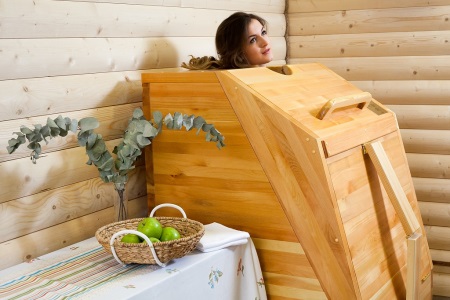Mini-sauna for apartments
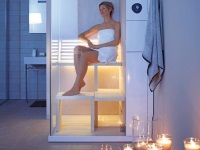
Almost everyone loves the sauna, because being in a warm, full of fragrant steam is not only pleasant, but also very healthy (with the exception of some contraindications). Unfortunately city dwellers don't often manage to visit the sauna - after all they have to go to the countryside and attend the sessions in the spa or fitness centers. All this is associated with unnecessary costs - not only temporarily, but also monetarily.
Today, true sauna connoisseurs have the opportunity to receive health-improving procedures at any convenient time right in your own apartment. You can have a home mini-sauna in three ways: buy a ready-made sauna, order a sauna by your own design or build a sauna on your own hands. Which option to choose - it's up to you. In this article, we will tell you about the existing varieties of home saunas and how to build a sauna in the apartment yourself.
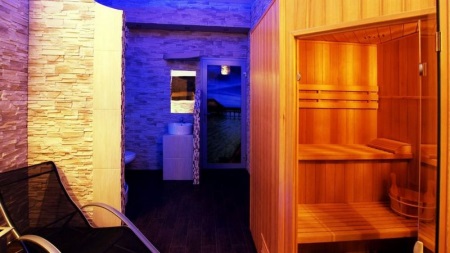
Types, their pros and cons
Of all the variety of types of sauna that exist in the world, for the arrangement in an ordinary city apartment fit only two: the classic Finnish steam room and infrared sauna. Let's look at the features of each of these types.
Finnish sauna is very popular in our country because its effect is very similar to the Russian bath. However, unlike our usual sauna, the steam in the Finnish sauna is not humid, but dry. The air in the Finnish sauna is usually heated to a temperature of 100 to 120 degrees, so only well-trained people can stay there for a long time. A large amount of hot steam is obtained by pouring water on the red-hot stones, lying on the stove.
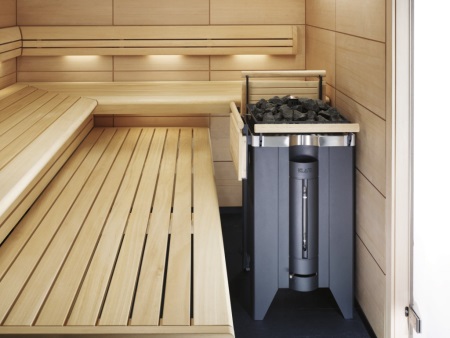
The device in the apartment Finnish sauna requires arrangement of waterproofing and a powerful ventilation system, in addition, it will be necessary to comply with fire safety requirements, of which there are many.
Other disadvantages of the Finnish sauna include a long list of contraindications and negative effects on human mucous membranes.
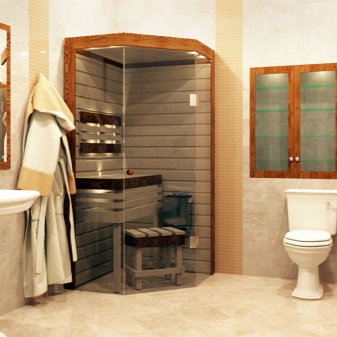

Infrared sauna is gaining more and more fans lately. This is due to the fact that the infrared rays are completely harmless to the body, so this type of steam room is suitable for those who are contraindicated to the traditional "hot" sauna (however, infrared sauna still has some limitations, so before you equip it in your apartment, read the list of contraindications). Infrared rays heat not the air, but the body, so the heat penetrates into the deep layers of muscle and bone tissue. The air temperature inside the cabin does not rise above 60 degrees, so it is quite comfortable to be in an infrared sauna. Significant advantage of the infrared sauna is the low power consumption.

If it is impossible to place some space for installing a fully functional stationary sauna in your apartment, but you still want to get health-improving sessions, take a look at the portable models of home saunas.
In apartment conditions the following varieties are the most convenient:
- A phyto barrel - sauna sessions inside a wooden barrel are often offered by various health centers. The size of the barrel allows an adult to freely fit in it. You can steam using the infusions of medicinal herbs.
- Cloth sauna also represents a kind of barrel, consisting of a thick cloth stretched over a metal frame. When folded, this mini-sauna takes almost no space, it can be hidden in a closet or under a bed. The disadvantage of this device is the high power consumption, since powerful heaters are installed inside the structure.
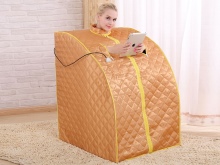
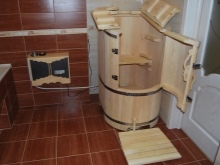
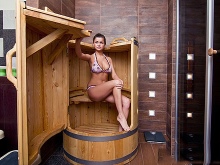
Approval
Having decided to build a real steam room at home, you need to be prepared for claims from some authorities. Therefore, before you start equipping your home sauna, get the consent of these organizations. The exact list of agencies you will need to go to in order to obtain a permit depends on your place of residence, since even within the same country the requirements may vary.
If you are in Russia, you will most likely need the consent of:
- State Fire Service;
- State Housing Inspectorate;
- Homeowners' Associations;
- Sanitary and Epidemiological Service;
- Rospotrebnadzor;
- Inspection of State Construction Supervision.
Collecting all documents will take you quite a lot of time and some money, but you will surely get permission.
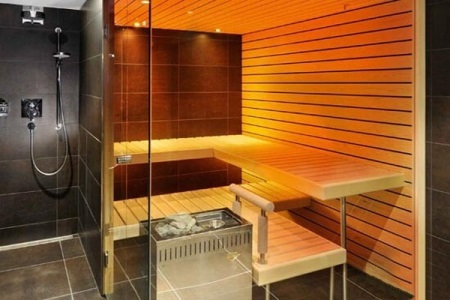
How to make it with your own hands?
The construction of a full-fledged sauna in a city apartment is a labor-intensive process. In order to obtain a beautiful, comfortable and, most importantly, safe sauna, you need to take care of some important points:
- Electrical safety. All electrical equipment that you will use in the sauna must have the appropriate degree of protection against moisture. The wiring should be done in a concealed way. One cable should be responsible for the lighting and the other for the stove. Be sure to connect a safety disconnect device and grounding elements to the wiring.
- Ventilation. Obligatory for all types of sauna except infrared. The ventilation system must include an exhaust hood and through-holes in the door to allow for air flow. The ventilation system can be located on the wall or on the ceiling, as long as it is in front of the stove.
- Finishing the walls and floor. Since we are talking about a dry steam room, there is no need to equip drains for water. The floor can be laid with ceramic tiles or wooden boards. For wall cladding, pine beam is usually used. Bar fixed to dowel-nails at least five places, therefore, it is necessary to fasten to the frame as many crossbars.
- Insulation. To create a heat-insulating layer, you can use only those materials that do not emit toxic substances when heated. Most often, mineral wool is chosen for this purpose. On top of the first layer of insulation is attached foil (with staples and foil scotch tape). On the foil lay counter-batten and only on it fasten the timber.
- Furnace. Traditionally, home saunas use so-called electric heater (except for infrared sauna, where infrared heaters are installed). If an electric stove is installed in the apartment, there will be no problems with the connection of the electric heater - the power of electrical equipment is enough to connect another stove. However, in apartments connected to the gas line, there are some difficulties. The problem can be solved in two ways: by connecting a stove with low power (in this case the sauna will be heated for at least a couple of hours) or by organizing a separate input for connecting the electric heater to the network (here you will need the help of a professional electrician).
- Door. The doorway and, accordingly, the door itself should be as small as possible - in this way the heat will be better preserved. If funds allow, the door should be made of solid wood, like in real saunas. For safety reasons it is important to have a heat-resistant glass insert in the door.
- Interior fittings. Inside the sauna there should be a minimum of furniture. A seat, a footstool and a shelf for bath accessories are enough. Experts recommend making sauna accessories from lime. The optimal height of the upper seat is 110 cm.
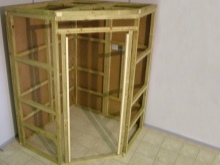
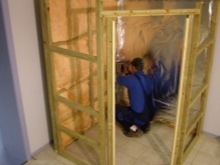
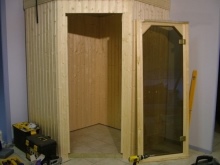
Tips
- You should not visit the sauna too often. The recommended frequency of visits depends on the state of health, so it all depends on the individual. Some people can have a session every day, while others should limit themselves to one or two times a week.
- The best time to visit the sauna is early morning or evening before going to bed. Before the sauna, you should take a shower to clean the pores of impurities. After the sauna, do not forget to wash as well, and spend some time at rest.
- Sweat glands begin to work actively no sooner than after 10 minutes in the sauna, so set a comfortable temperature of heating, so you can sit in the cabin at least 15 minutes.
- You should go to the sauna with a clean terry towel. First, it is hygienic, and second, the towel absorbs sweat, thus keeping the seats clean.
- Don't forget to drink as much clean water as possible. You lose a lot of fluids during your session, so you need to replenish your supply.
